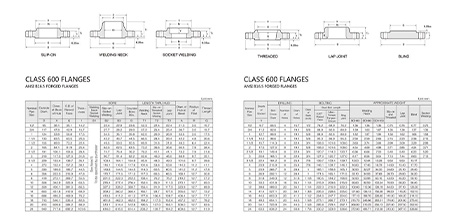-
Cangzhou Yulong Steel Co., Ltd.
-
Phone:
+86 13303177267 -
Email:
admin@ylsteelfittings.com
- English
- Arabic
- Italian
- Spanish
- Portuguese
- German
- kazakh
- Persian
- Greek
- French
- Russian
- Polish
- Thai
- Indonesian
- Vietnamese
- Zulu
- Korean
- Uzbek
- Hindi
- Serbian
- Malay
- Ukrainian
- Gujarati
- Haitian Creole
- hausa
- hawaiian
- Hebrew
- Miao
- Hungarian
- Icelandic
- igbo
- irish
- Japanese
- Javanese
- Kannada
- Khmer
- Rwandese
- Afrikaans
- Albanian
- Amharic
- Armenian
- Azerbaijani
- Basque
- Belarusian
- Bengali
- Bosnian
- Bulgarian
- Catalan
- Cebuano
- China
- China (Taiwan)
- Corsican
- Croatian
- Czech
- Danish
- Esperanto
- Estonian
- Finnish
- Frisian
- Galician
- Georgian
- Kurdish
- Kyrgyz
- Lao
- Latin
- Latvian
- Lithuanian
- Luxembourgish
- Macedonian
- Malgashi
- Malayalam
- Maltese
- Maori
- Marathi
- Mongolian
- Myanmar
- Nepali
- Norwegian
- Norwegian
- Occitan
- Pashto
- Dutch
- Punjabi
- Romanian
- Samoan
- Scottish Gaelic
- Sesotho
- Shona
- Sindhi
- Sinhala
- Slovak
- Slovenian
- Somali
- Sundanese
- Swahili
- Swedish
- Tagalog
- Tajik
- Tamil
- Tatar
- Telugu
- Turkish
- Turkmen
- Urdu
- Uighur
- Welsh
- Bantu
- Yiddish
- Yoruba

Nov . 25, 2024 16:51 Back to list
Exploring Various Forms of Coupling in Engineering and Their Applications
All Types of Coupling An Overview
In engineering and mechanics, coupling refers to the connection between two or more components that facilitates the transfer of motion, power, or signals. Couplings play a critical role in various mechanical systems, from simple machines to complex industrial machinery. Understanding the different types of couplings available helps engineers design systems that are efficient and reliable.
1. Rigid Coupling
Rigid couplings are used to join two shafts that are aligned perfectly with each other. They offer a solid connection, ensuring no relative motion between the shafts. Rigid couplings are typically made of materials like steel or aluminum. One major advantage is that they maintain the original alignment of the shafts, thus providing consistent performance in transmitting torque. However, their inability to accommodate misalignment is a significant limitation, making them unsuitable for applications where shaft alignment cannot be guaranteed.
2. Flexible Coupling
Flexible couplings are designed to accommodate misalignments between shafts. They can compensate for angular, parallel, and axial misalignments, making them particularly useful in applications with thermal expansion, vibration, or other factors that can cause shifts in alignment. Common examples include jaw couplings, spider couplings, and bellows couplings. These types of couplings are essential in systems where flexibility can enhance performance and reduce wear on components.
Universal joints, or U-joints, are unique couplings that allow for the transmission of power between shafts that are not in line with each other. They consist of two yokes connected by a cross-shaped part known as the spider. Universal joints can transmit rotary motion at angles, making them ideal for applications in steering columns, drive shafts in vehicles, and various machinery where flexibility and angular movement are necessary.
all types of coupling

4. Magnetic Coupling
Magnetic couplings utilize magnetic forces to transmit torque without any physical connection between the coupled components. This design eliminates the wear and tear associated with traditional couplings and allows for the isolation of the driving and driven components. Magnetic couplings are particularly useful in environments where seals are necessary to prevent contamination, such as in pumps and mixers in the food or pharmaceutical industries.
5. Hydraulic Coupling
Hydraulic couplings use fluid to transmit power between two shafts. They allow for variable speed ratios and can provide smooth acceleration and deceleration, making them ideal for applications in heavy machinery, such as excavators and cranes. The hydraulic fluid enhances the ability to absorb shock loads and provides an additional layer of safety and reliability in operations.
6. Belt and Chain Couplings
Belt and chain coupling mechanisms transmit power through a flexible medium, such as belts or chains. These systems are versatile and can handle different distances between the driving and driven shafts. Belt couplings are commonly found in conveyor systems, while chain couplings are prevalent in bicycles and motorbikes. They are particularly valued for their ability to easily absorb shock loads and manage some misalignment.
Conclusion
Choosing the appropriate type of coupling is critical to the success of any mechanical system. Factors such as alignment, transmitted torque, operating conditions, and the operational environment must be considered. By understanding the various coupling types—rigid, flexible, universal, magnetic, hydraulic, and belt and chain—engineers can select the best solution for their particular application, ensuring optimal performance and longevity of their machinery. The advancements in coupling technology continue to evolve, providing innovative solutions tailored to meet the demands of modern engineering challenges.
Latest news
-
ANSI 150P SS304 SO FLANGE
NewsFeb.14,2025
-
ASTM A333GR6 STEEL PIPE
NewsJan.20,2025
-
ANSI B16.5 WELDING NECK FLANGE
NewsJan.15,2026
-
ANSI B16.5 SLIP-ON FLANGE
NewsApr.19,2024
-
DIN86044 PLATE FLANGE
NewsApr.19,2024
-
DIN2527 BLIND FLANGE
NewsApr.12,2024
-
JIS B2311 Butt-Welding Fittings LR/SR 45°/90° /180°Seamless/Weld
NewsApr.23,2024
-
DIN2605-2617 Butt-Welding Fittings LR/SR 45°/90°/180° Seamless/Weld
NewsApr.23,2024











